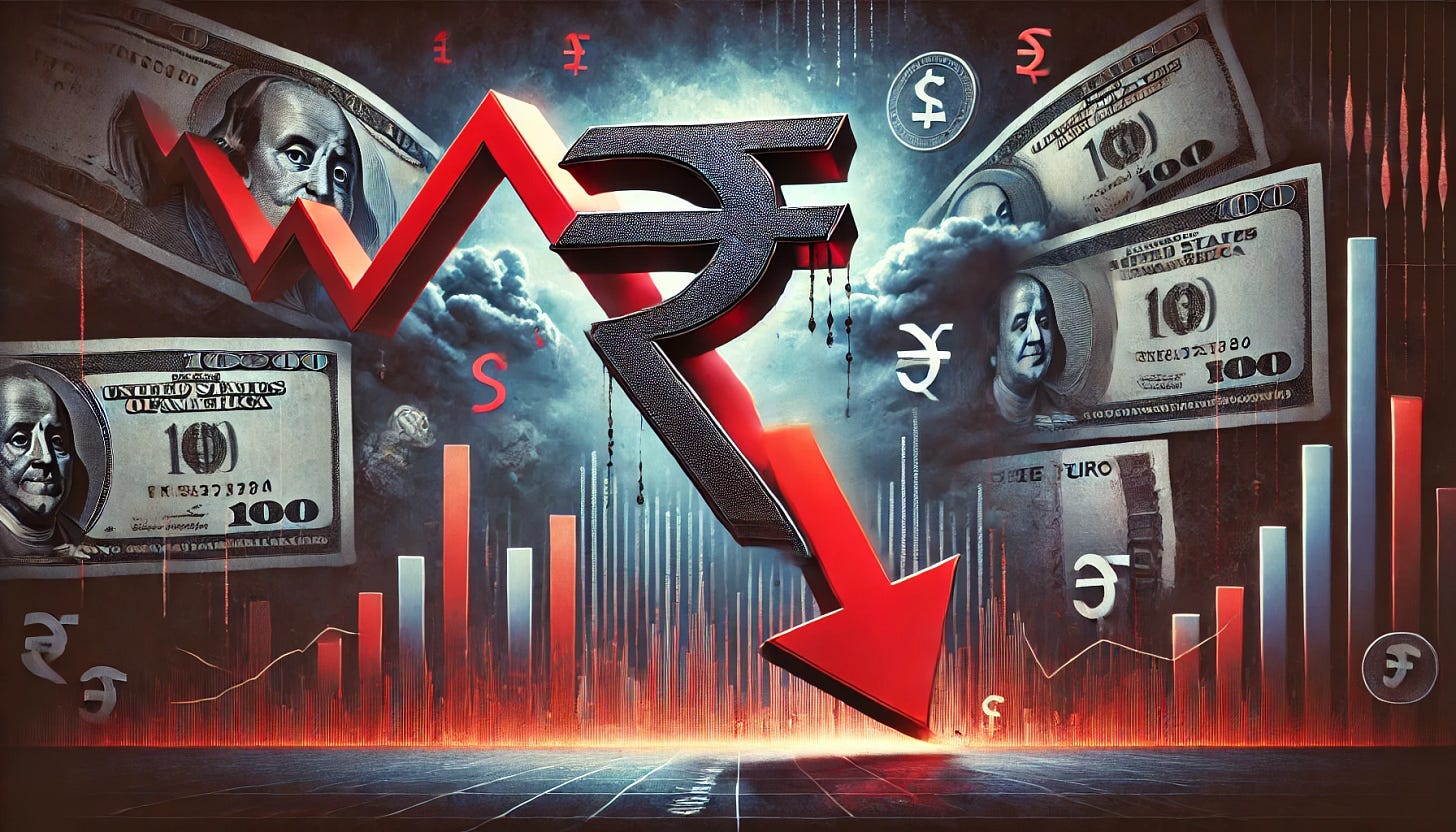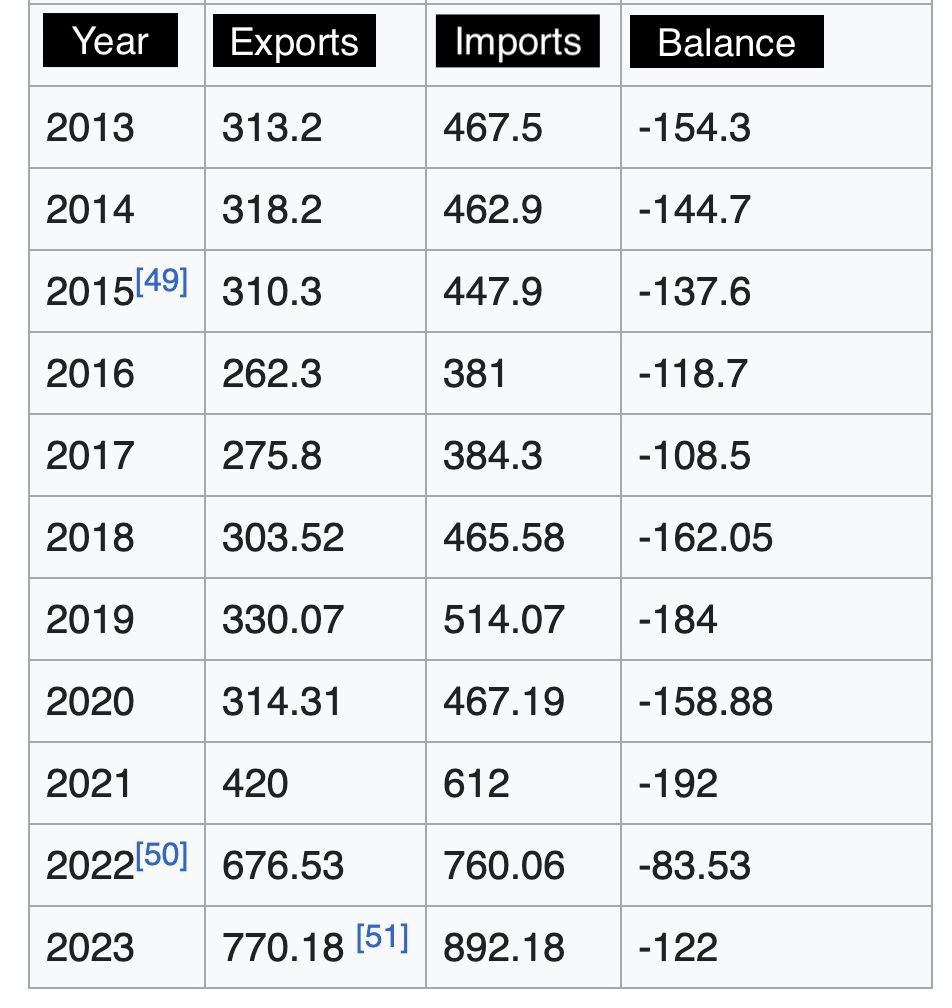Why The Indian Rupee is Falling (87.47 INR per USD)
Understand how global economics work
The Indian currency is getting weaker. One dollar is now 87.47 rupees. I visited the United States long back in 2008, and I remember 1 USD being less than 40 rupees. Why is this happening, and what should we do? Let’s read a bit more about it.
First, no one can be an “certified” expert in such matters. The fiat currency system is very complex, and different people have different perspectives and opinions about how things work. I’d like to add a disclaimer that there might be errors in what I explain here. Rather than taking what I say as 100% truth, please consider this a pointer toward certain things you need to explore further. Treat it as a spark for your intellectual curiosity.
A weakening Indian rupee creates a lot of problems for folks like us. We spend in dollars—Zoom, email marketing tools, SaaS products, and domain names. Most of the goods and services required for digital businesses are priced in dollars. If I am spending $1,000 a month on these services, a 2-rupee increase in the cost of the dollar in rupee terms means an additional Rs. 2,000 expense for me. Meanwhile, my taxes, denominated in Indian rupees, do not go down. As a result, I am earning less in business profits than I used to.
Trade Imbalance of Nations
To understand why currencies devalue against each other, you first have to understand trade imbalances. What’s a trade imbalance? Let’s break it down simply.
Let’s say you and I live on an island. I catch fish, and you catch chickens. In a year, I catch 100 fish, and you catch only 50 chickens. For the sake of simplicity, let’s assume one chicken equals one fish in pricing. I consume 50 fish and sell 50 fish to you. You consume 25 chickens and sell me 25 chickens. But since you consumed more than me, you still owe me another 25 chickens. This means I have a trade surplus, and you have a trade deficit.
If you consider India as a single entity—let’s call it "India Inc."—India earns money when it exports more than it imports. On the other hand, it spends money when it imports more than it exports. Right now, India is importing more goods than it is exporting. The trade imbalance is slightly balanced by services because India exports more services than it imports.
The only time India had a trade surplus was in 2007. According to Wikipedia, here is India’s trade deficit over the past 10 years (priced in billions of US dollars). You can check Wikipedia for data going back to 1999.
Now, have you ever wondered who is paying for this trade imbalance? We are—through reduced purchasing power. A weakening rupee.
The rupee can become strong only when the trade deficit turns into a trade surplus. But ironically, only a weakening rupee can help plug this hole in the trade deficit. How? Let me explain.
A Weak Rupee Encourages Exports
Let’s say you’re a manufacturer. You make stuff. If one dollar equals 200 rupees, you’ll be encouraged to export to other countries, especially the United States. And people in the U.S. will be more inclined to buy from India because it's so cheap. (Now think about why China exports so much to the world.)
But if one dollar equals only 50 rupees, you might not be as motivated to export. At the same time, buyers will feel that purchasing from India is costly. Something you previously sold for $1 would now cost $4 for U.S. citizens.
Since India imports a lot—especially energy and other critical resources—a strong rupee might reduce exports and leave India without the necessary forex reserves to import essential goods. So, the country can devalue the rupee to make exports more attractive. The goal is to encourage exports over local sales to offset the trade imbalance.
How Currencies Are Devalued
Any country’s currency can be devalued through inflation (along with trade deficits). And inflation happens through debt. But this debt doesn’t have to come from people’s savings. A central bank can create new debt against imaginary assets, such as promissory notes (bonds). The more liquidity injected into the system, the more inflation rises, weakening the currency and increasing the incentive to export—again, to offset the trade imbalance.
If you think of India as a single entity, India earns money when it exports and spends money when it imports. But here’s something crucial: In what currency does India earn? Not in Indian rupees, but in U.S. dollars—because the dollar is the world’s reserve currency.
How did the U.S. dollar become the world’s reserve currency? By being used to price oil. (Look up the “petrodollar.”) But how did the U.S. ensure that oil is priced in dollars, even though oil isn’t produced solely in the U.S. but in Gulf countries? You may not like the answer—it’s through military domination. Or simply put: violence. This rabbit hole goes deep, my friend.
There was a time when countries held U.S. dollars so they could buy goods from the U.S. But now, the U.S. doesn’t produce as much. Yet most countries still keep their forex (foreign exchange reserves) in U.S. dollars because other nations also accept dollars in exchange for goods and services. Germany doesn’t have to pay India in euros. Qatar doesn’t have to pay India for products and services in dinars. They can pay in dollars.
All these countries using the U.S. dollar as their forex reserve gives America a tremendous advantage. The U.S. doesn’t have to produce anything new—they can just keep creating dollars out of thin air and buying the world’s goods. They don’t literally print it, but they make it through debt issuance and now the total U.S. debt stands at $36.4 Trillion.
While we work hard to produce real goods and services, the U.S. “prints” money and buys our labor, time, and energy.
How long can they keep doing this? Probably not for long.
The solution will become apparent when you understand the problem deeply. This post is about the problem, not the solution.
Some say the solution is Bitcoin. That countries will settle their trade imbalances with Bitcoin instead of U.S. Dollar. They used to settle their balances using gold long back because gold was hard to produce. In a day and age where the U.S. Dollar is not backed by gold, Bitcoin might be the only option left for countries to settle their differences. A neutral money that is capped mathematically and needs real world energy to make more of. This is not financial advice. But just in case the world moves to a Bitcoin standard the price of Bitcoin will be unfathomable.
P.S. When I started writing this post, the price was 87.27 and it went up to 87.47 in a matter of 30 minutes.






Nice
Very nicely explained!